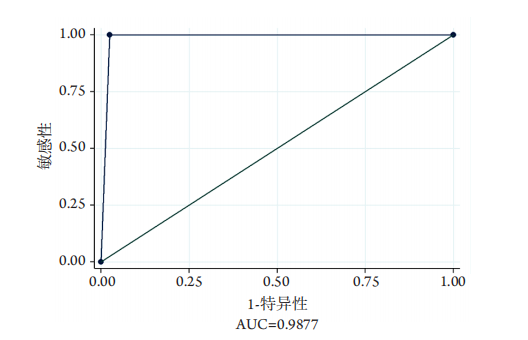1、World Health Organization. The top 10 causes of death. 2020[EB/OL].
https://www.who.int/news-room/fact-sheets/detail/the-top-10-
causes-of-death. 2021-01-22.World Health Organization. The top 10 causes of death. 2020[EB/OL].
https://www.who.int/news-room/fact-sheets/detail/the-top-10-
causes-of-death. 2021-01-22.
2、Drugs & Diseases C. Risk factors for coronary artery disease. 2016[EB/OL].
https://www.healthline.com/health/coronary-artery-disease/risk�factors. 2020-12-29.Drugs & Diseases C. Risk factors for coronary artery disease. 2016[EB/OL].
https://www.healthline.com/health/coronary-artery-disease/risk�factors. 2020-12-29.
3、Stone NJ, Robinson JG, Lichtenstein AH, et al. 2013 ACC/
AHA guideline on the treatment of blood cholesterol to reduce
atherosclerotic cardiovascular risk in adults: a report of the
American College of Cardiology/American Heart Association Task
Force on Practice Guidelines[ J]. J Am Coll Cardiol, 2014, 63(25 Pt
B): 2889-2934.Stone NJ, Robinson JG, Lichtenstein AH, et al. 2013 ACC/
AHA guideline on the treatment of blood cholesterol to reduce
atherosclerotic cardiovascular risk in adults: a report of the
American College of Cardiology/American Heart Association Task
Force on Practice Guidelines[ J]. J Am Coll Cardiol, 2014, 63(25 Pt
B): 2889-2934.
4、Wilson PW, D'Agostino RB, Levy D, et al. Prediction of coronary
heart disease using risk factor categories[ J]. Circulation, 1998,
97(18): 1837-1847.Wilson PW, D'Agostino RB, Levy D, et al. Prediction of coronary
heart disease using risk factor categories[ J]. Circulation, 1998,
97(18): 1837-1847.
5、National Cholesterol Education Program (NCEP) expert panel on
detection, evaluation, and treatment of high blood cholesterol in
adults (Adult Treatment Panel III). Third report of the National
Cholesterol Education Program (NCEP) expert panel on detection,
evaluation, and treatment of high blood cholesterol in adults (Adult
Treatment Panel III) final report[ J]. Circulation, 2002, 106(25):
3143-3421.National Cholesterol Education Program (NCEP) expert panel on
detection, evaluation, and treatment of high blood cholesterol in
adults (Adult Treatment Panel III). Third report of the National
Cholesterol Education Program (NCEP) expert panel on detection,
evaluation, and treatment of high blood cholesterol in adults (Adult
Treatment Panel III) final report[ J]. Circulation, 2002, 106(25):
3143-3421.
6、D'Agostino RB Sr, Vasan RS, Pencina MJ, et al. General cardiovascular
risk profile for use in primary care: the Framingham Heart Study[ J].
Circulation, 2008, 117(6): 743-753.D'Agostino RB Sr, Vasan RS, Pencina MJ, et al. General cardiovascular
risk profile for use in primary care: the Framingham Heart Study[ J].
Circulation, 2008, 117(6): 743-753.
7、Conroy RM, Py?r?l? K, Fitzgerald AP, et al. Estimation of ten-year risk
of fatal cardiovascular disease in Europe: the SCORE project[ J]. Eur
Heart J, 2003, 24(11): 987-1003.Conroy RM, Py?r?l? K, Fitzgerald AP, et al. Estimation of ten-year risk
of fatal cardiovascular disease in Europe: the SCORE project[ J]. Eur
Heart J, 2003, 24(11): 987-1003.
8、Graham I, Atar D, Borch-Johnsen K, et al. European guidelines on
cardiovascular disease prevention in clinical practice: executive
summary: Fourth Joint Task Force of the European Society of
Cardiology and Other Societies on Cardiovascular Disease Prevention
in Clinical Practice (Constituted by representatives of nine societies
and by invited experts)[ J]. Eur Heart J, 2007, 28(19): 2375-2414.Graham I, Atar D, Borch-Johnsen K, et al. European guidelines on
cardiovascular disease prevention in clinical practice: executive
summary: Fourth Joint Task Force of the European Society of
Cardiology and Other Societies on Cardiovascular Disease Prevention
in Clinical Practice (Constituted by representatives of nine societies
and by invited experts)[ J]. Eur Heart J, 2007, 28(19): 2375-2414.
9、Seidelmann SB, Claggett B, Bravo PE, et al. Retinal vessel calibers in
predicting long-term cardiovascular outcomes: the atherosclerosis risk
in communities study[ J]. Circulation, 2016, 134(18): 1328-1338.Seidelmann SB, Claggett B, Bravo PE, et al. Retinal vessel calibers in
predicting long-term cardiovascular outcomes: the atherosclerosis risk
in communities study[ J]. Circulation, 2016, 134(18): 1328-1338.
10、Wong TY, Kamineni A, Klein R, et al. Quantitative retinal venular
caliber and risk of cardiovascular disease in older persons: the
cardiovascular health study[ J]. Arch Intern Med, 2006, 166(21):
2388-2394.Wong TY, Kamineni A, Klein R, et al. Quantitative retinal venular
caliber and risk of cardiovascular disease in older persons: the
cardiovascular health study[ J]. Arch Intern Med, 2006, 166(21):
2388-2394.
11、McGeechan K, Liew G, Macaskill P, et al. Meta-analysis: retinal vessel
caliber and risk for coronary heart disease[ J]. Ann Intern Med, 2009,
151(6): 404-413.McGeechan K, Liew G, Macaskill P, et al. Meta-analysis: retinal vessel
caliber and risk for coronary heart disease[ J]. Ann Intern Med, 2009,
151(6): 404-413.
12、Liew G, Wong TY, Mitchell P, et al. Retinopathy predicts coronary
heart disease mortality[ J]. Heart, 2009, 95(5): 391-394.Liew G, Wong TY, Mitchell P, et al. Retinopathy predicts coronary
heart disease mortality[ J]. Heart, 2009, 95(5): 391-394.
13、吴乐正. “眼与人工智能”迎来时代挑战的新台阶[ J]. 眼科学
报, 2021, 36(1): 1-3.
WU LZ. “Eye and artificial intelligence” ushers in a new step of
challenge of the times[ J]. Yan Ke Xue Bao, 2021, 36(1): 1-3.吴乐正. “眼与人工智能”迎来时代挑战的新台阶[ J]. 眼科学
报, 2021, 36(1): 1-3.
WU LZ. “Eye and artificial intelligence” ushers in a new step of
challenge of the times[ J]. Yan Ke Xue Bao, 2021, 36(1): 1-3.
14、吴晓航, 刘力学, 陈睛晶, 等. 白内障人工智能辅助诊断系统在社
区筛查中的应用效果[ J]. 眼科学报, 2021, 36(1): 4-9.
WU XH, LIU LX, CHEN JJ, et al. Application of
artificial intelligence-assisted diagnostic system for community-based
cataract screening[ J]. Yan Ke Xue Bao, 2021, 36(1): 4-9.吴晓航, 刘力学, 陈睛晶, 等. 白内障人工智能辅助诊断系统在社
区筛查中的应用效果[ J]. 眼科学报, 2021, 36(1): 4-9.
WU XH, LIU LX, CHEN JJ, et al. Application of
artificial intelligence-assisted diagnostic system for community-based
cataract screening[ J]. Yan Ke Xue Bao, 2021, 36(1): 4-9.
15、Poplin R, Varadarajan AV, Blumer K, et al. Prediction of cardiovascular
risk factors from retinal fundus photographs via deep learning[ J]. Nat
Biomed Eng, 2018, 2(3): 158-164.Poplin R, Varadarajan AV, Blumer K, et al. Prediction of cardiovascular
risk factors from retinal fundus photographs via deep learning[ J]. Nat
Biomed Eng, 2018, 2(3): 158-164.
16、Son J, Shin JY, Chun EJ, et al. Predicting high coronary artery calcium
score from retinal fundus images with deep learning algorithms[ J].
Transl Vis Sci Technol, 2020, 9(6): 28.Son J, Shin JY, Chun EJ, et al. Predicting high coronary artery calcium
score from retinal fundus images with deep learning algorithms[ J].
Transl Vis Sci Technol, 2020, 9(6): 28.




